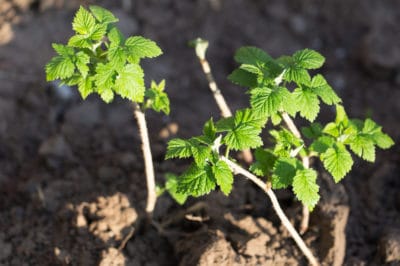Sun Requirements
The best raspberries are grown in an area that receives four to five hours of direct sunlight every day. Partial shade is tolerated and is beneficial on extremely hot days. Extreme heat from too much sunlight can dry out the berries quickly.
Soil Requirements
The health and productivity of raspberry plants are determined by its soil. A poor soil usually promotes stunted growth, diseased plants, reduced fruit production, or plant death. This should not occur if all the requirements for fertile soil are met.
Soil pH
A soil pH of 5.6 to 6.2 is preferred by raspberry plants. Soil tests reveal if the pH needs correcting. Add lime or wood ash to correct a soil pH that is too high. If the soil pH is too low, add sulfur to the soil to correct it.
Soil Drainage
The most important factor in considering where to plant raspberry bushes is the drainage of the soil. If the soil is too wet, it is susceptible to a soilborne disease called root rot. A well-drained, loamy soil with moderate water-holding capacity is the preferred soil of raspberry bushes. The soil drainage can be improved by mixing these into the soil:
- Peat Moss
- Plant-Based Compost
- Buckwheat Cover Crop
- Rye Cover Crop
- Millet Cover Crop
- Oat Cover Crop
- Animal Manure
Soil Nutrients
Nitrogen is needed for raspberry plants more than any other mineral, followed by potassium and phosphorus. Adding organic matter to the soil will increase the nitrogen level, but it will not be available to the plants for 6 to 9 months. Add an organic to meet any needs that a soil test reveals.
Locations to Avoid
Crops such as potatoes, tomatoes, eggplant, other cane berries, peppers, and strawberries are susceptible to many of the same diseases and insects as raspberries. It is best to avoid growing raspberries in the same site these grew in within the previous three years.
The raspberry patch location should not be within 600 feet of any wild growing berries. The wild berry bushes may contain diseases that can spread to your raspberry plants. If there are wild berries nearby, it is best to cut down and destroy them.
Water Requirement
Adequate water from rainfall is not always available. When choosing a raspberry patch, choose a location where water from a hose or other source is accessible.
